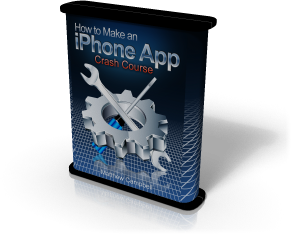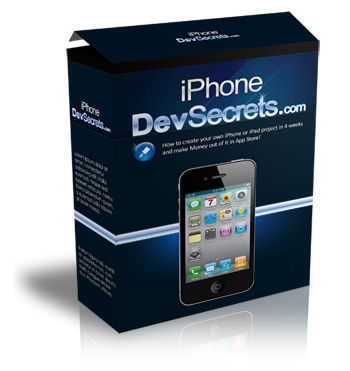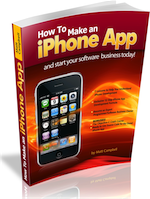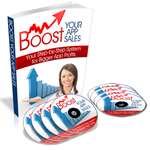How I Lost $55,742.22 In Profit Last Year
Today I thought I would have a little bit of fun by answering the question, “How much more money could I have made by giving away my app for free?” Now of course, I don’t mean that I am running a charity. What I am getting at this that instead of just selling my app for quick change (with an Apple tax) it occurs to me that I could have taken the longer view and used my iPhone app as an up sell to a Mac desktop app for much more money and without an Apple tax. Apps like Things and 1Password are examples of how this is being done right now.
For this thought experiment what I started with are real world revenue numbers from my Wine Pad application. For the next step I took what I know about the download rates of free vs paid apps to estimate how many downloads I could have expected in Wine Pad had been free all year (I get this number from tests I did with an add supported version of Wine Pad). The next thing I did was make an assumption about what a conversion rate for an app like this could be based on my experience with products I sell on websites.
NOTE: The word “conversion rate” refers to the number of people who buy your product divided by the number of people who view a value proposition that you present to them. I have found that websites typically have a conversion rate of about 3% meaning that for every 100 people who visit a sale page 3 of them will buy your product.
From these assumptions I arrive at what I think is a good model of what revenue I could have expected if I tried to up sell Wine Pad users to a Mac desktop app. First, let’s go over what happened in the real world last year with Wine Pad…
Time Frame: 12 months
Units sold: 3586
Price Point: $2.99
Total Revenue: $10,722.14
Profit After Apple’s Cut: $7505.49
As you can see above, Wine Pad netted me over $7500 over the year. Not bad, but you would need 8 or 9 apps like this to keep your kid in sneakers all year. The Apple tax of 30% really stings here especially on top of the 48% in taxes you can expect to pay as a business owner on these profits.
Let’s try to imagine a completely different play next.
Let me take a second to describe what I mean about the up sell play. The idea is that you would need two products here: a complete desktop application and the iPhone application. Customers expect to pay more for desktop software and Apple has no control over desktop applications and cannot take any tax on these. Of course, having a desktop app doubles your workload but you can actually leverage most of the iPhone code here since the Mac and iPhone share much common ground.
The idea is to give away the iPhone app and engage your users with a quality experience. A certain percentage of users will want the additional feature set that and convenience that would come with a desktop experience. Since the perceived value of desktop software is so much greater you can charge more money for your desktop application (typically between $30 to $100).
From my testing I know that people seem to download 20 times as many apps when they are free. Using this as my guide I came up with these alternative stats for Wine Pad downloads last year.
Time Frame: 12 months
Units downloaded: 71,720
Price Point: FREE
Total Revenue: $0
Profit After Apple’s Cut: $0
Of course, now we are making no profit (of course neither is Apple). But, let’s add the up sell proposition to our business model.
Typical Website Conversion Rate: 3%
Sales Projected: 2,152
Price Point: $29.99
Total Revenue: $64,538.48
What I am saying here is that I hope to convert 3% of users who download the free version on the iPhone into buyers of my Mac software. If I priced my desktop app at a reasonable $29.99 then I would net $64,538.48! Wow!
Of course Apple cannot take a cut here so I am saving around $20,000. However, selling software like this usually entails credit card processing fees of something like 2% so I refine the numbers a bit:
That is a huge difference isn’t it? Specially, this model would have brought in $55,742.22 more than simply selling my app outright on the App Store.
This may look like I am just blowing smoke up your [REDACTED], but I actually feel pretty confident in these numbers. They are based on a years of app sales and my experience selling eBooks. Obviously, producing another product will take some time but even if I outsourced a desktop version of Wine Pad I think I could gotten it down for between $15,000-$20,000.
Really the take away message for people who want to be iPhone app publishers is that it will pay if you get a bit creative in your revenue models. The model I am showing here is being used now. I would also encourage you to take advantage of the power of FREE especially on the App Store. Check out the book Free for a discussion of the power of giving away products. But, alway have a backend business plan in place.
What do you think about this plan? Do you have any sizzling or silly ideas to make money on iPhone apps? Am I just full of it? Let me know in the comments below.
PS: please hit the retweet button if you like this article. I’m curious about what the rest of the Twitter-verse thinks of this idea…
I think your 3% conversion rate from your free version is insanely high. From the difference in behavior between the users of my free apps and my paid ones, 0.3% would be incredibly successful, and 0.03% is likely high.
But hey, try it! I’d love to hear the results! If you’re right then there’s plenty of fun ahead!
I have not made any iphone apps, but am interested in this “freemium” model, of which I have heard of. I am not sure about the conversion rate, but I would think there are obviously many variables involved. I think one of those variables includes how much your community or audience is into your product, and how they interact with your brand. If your free product is intended to get them to be involved in you community, then you can upsell them on a premium version (be it on the iphone, ipad, or computer).
Regarding Winepad, I would be interested in what desktop version of this app one would be interested in, eventhough I am also not a wine drinker ![]() Anyway, the beauty of this app on the iphone is that it is mobile. I could be mistaken, but I am not sure someone would go home and record their wines on the desktop after they get home. But, there may be some functionality of the desktop version that is more practical than on the iphone. For example, moving data around is easier on a desktop. So being able to sync the iphone app with desktop app is a good idea. Also, it seems to me that you could develop a registry of what is in your wine cellar versus what is on your wine pad. Then you could create a grocery list of what wines to buy, etc.
Anyway, the beauty of this app on the iphone is that it is mobile. I could be mistaken, but I am not sure someone would go home and record their wines on the desktop after they get home. But, there may be some functionality of the desktop version that is more practical than on the iphone. For example, moving data around is easier on a desktop. So being able to sync the iphone app with desktop app is a good idea. Also, it seems to me that you could develop a registry of what is in your wine cellar versus what is on your wine pad. Then you could create a grocery list of what wines to buy, etc.
The point I am making is that the desktop version would need some functionality that is unique to a desktop. And, it would need to make sense that someone would want or need that app enough to buy it for $30 or more.
So provided that these items are true, I think you could improve your revenue model accordingly; which I hope the best for you in this!
An interesting and important discussion before you start programming. I agree with the 3% conversion number for iPhone apps appropriately priced in the $2 – $4 range. The key being that one will have to keep a marketing/sales campaign sustained while you are creating other new apps and make the entire effort worth it. This assumes you are wearing many hats in order to keep overhead low. The marketing/sales effort quickly becomes very time consuming and becomes a distraction from development. I am looking at alternates to leverage apps already for sale and another about to be released, like advertising. This option seems very time consuming work for anyone doing most of the work. I never considered a desktop product that leads to additional sales … hmmm? I am thinking the inverse, a desktop app for free that supports and adds value to a higher priced iPhone app? How would Apple feel about a desktop app updating an iPhone app by a customer?
@MatthewF – it is ultimately hard to say without testing and may depend on the app and how you package them. But, I believe that 3% is possible if done well.
@andyrich – There are features that would work for WinePad on the desktop better than an iPhone app. The iPhone app excels at capturing data when you are out and about but managing, updating, backing up and everything else is pretty awkward on the iPhone. Maybe it would work on iPad to an extent but there is a lot of value that can be added on the desktop.
@dkmcguire – The reason I like the idea of free iPhone apps is because you have the distribution already in place to reach lots of customers. In essence, you start with the biggest possible sales “Funnel”. Charging even $2-$4 will reduce that and give you less chances to sell the bigger $30 product that Apple cannot take a cut of. Obviously though, products like “Things” and “1Password” do quite well with this model so you will want to find a way to test each approach.
Desktop App Updating iPhone App?
Not sure what you are getting at hear. If you are talking about using a desktop app to change data on the iPhone app then I don’t think Apple really cares about that. It would probably depend though on how much happens to the app and whether it violates Apple’s Human Interface guidelines.
If you are talking about distributing a desktop app for free to attempt to up-sell an iPhone app then I doubt they would have a problem with that either and would probably encourage you to do it. What did you have in mind?
You must be logged in to post a comment.
Learn How To Make An iPhone App right now using my proven system.
PS: Tons of us are having a blast living off our own code, join us now. Click here to get all the details.



